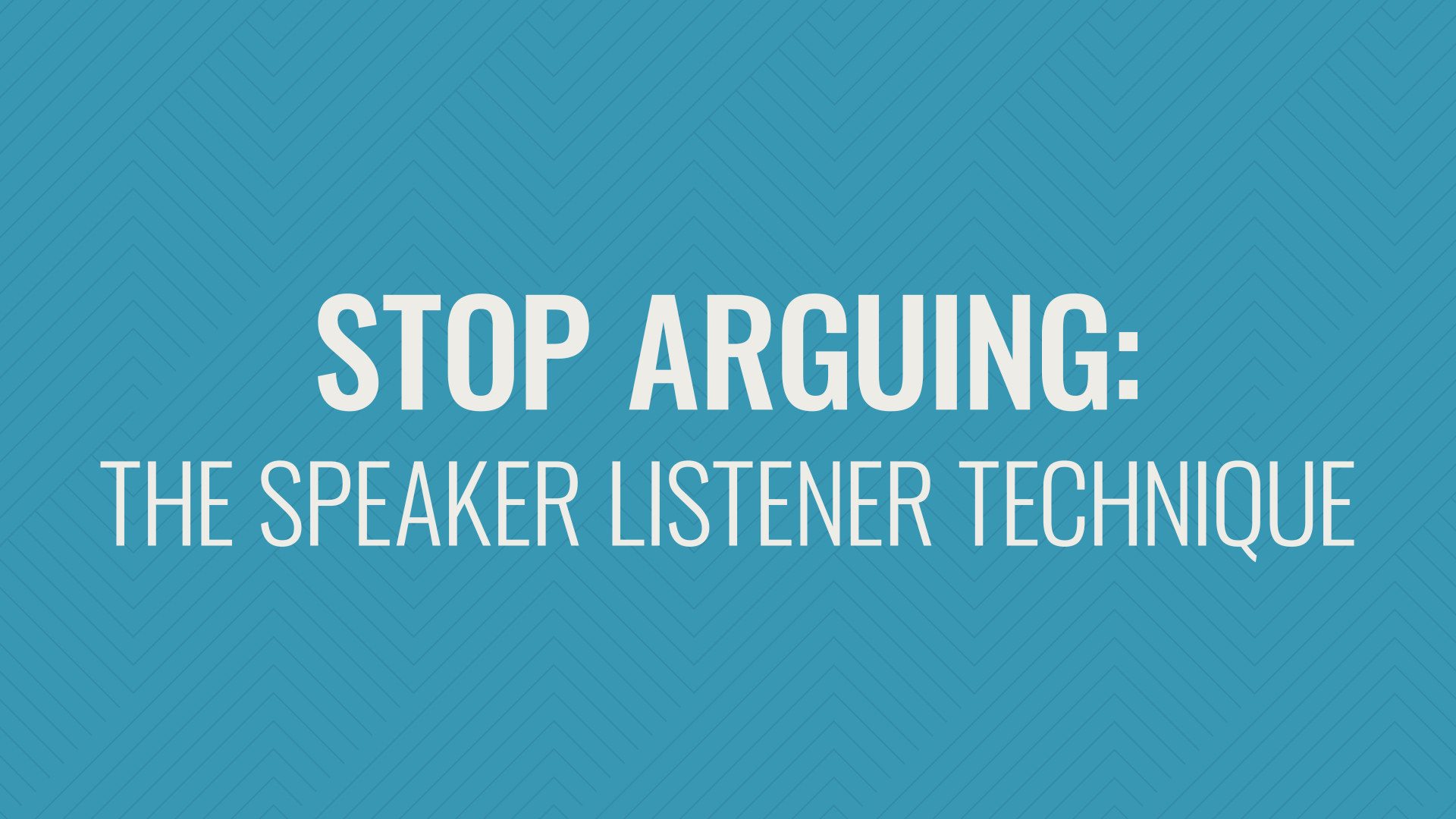Have you ever been in an argument with someone that seemed to go in circles? Perhaps you left the conversation feeling misinterpreted, invalidated, or ignored. You felt less understood or less loved than you did before the conversation. Maybe you regularly struggle to see eye to eye with your spouse, your friends, or your community.
That’s not unusual; it happens to all of us at times. Communicating clearly and effectively is hard work. You might think it would come naturally, but our natural sin tendencies and negative communication patterns get in the way. When communication isn’t clear, it results in hurt and misunderstanding. And when conversations get heated or conflict arises, the need to communicate effectively only increases.
If you want to get unstuck and end these unproductive arguments, you’re going to have to try a different way of communicating. Don’t worry; the solution is simple and takes only a few minutes to learn. You can start communicating more effectively by practicing something called “the Speaker-Listener technique.”
What is the Speaker-Listener Technique?
The Speaker-Listener technique (developed by Scott Stanley and friends in Fighting for Your Marriage and A Lasting Promise) gives structure to conversations. A form of active listening, the Speaker-Listener technique has each person take turns as both the “speaker” and the “listener,” while following a few simple rules for each role. By doing so, you can ensure that both people are fully heard and understood.
The Speaker-Listener technique works because it aligns with what God’s Word has to say about communication. The Bible tells us to be quick to listen, slow to speak, and slow to become angry (James 1:19). It says that we should listen to (Proverbs 18:13) and understand (Proverbs 18:2) each other before responding. This technique is an effective way to put that into practice.
Speaker-Listener Technique Rules
Here are the “rules” that define how the Speaker-Listener technique works:
For Both People:
- At any given time, one person plays the role of “Speaker” and one the role of “Listener.” Whoever is currently the “Speaker” has the floor.
- Over the course of a conversation, the floor should be shared equally between both people. Each of you take turns being the Speaker and the Listener.
For the Speaker:
- Articulate what you, yourself, are feeling and thinking. Don’t put words into the other person’s mouth or make assumptions about what they are feeling or thinking. Speak for yourself and rely on “I” statements when conveying information.
- Keep things short and to the point.
- Stop often and allow the Listener to paraphrase your thoughts as they heard them.
- After the Listener paraphrases your thoughts, either confirm that they heard you correctly or clarify if it appears they are misinterpreting you or missing something you meant to communicate.
- Continue this process until you feel understood as the Speaker.
For the Listener:
- Actively listen to the Speaker. Fight to the urge to zone out or spend your time preparing a response.
- Don’t interrupt, provide rebuttal, or defend yourself and your actions. That also extends to non-verbal communication: avoid rolling your eyes, sighing, or using other body language to show that you disagree with the Speaker or do not respect their opinion.
- After the Speaker finishes a thought and pauses, paraphrase back what you heard them say in your own words.
- Once you understand the Speaker’s perspective, and both of you agree that they are being heard correctly, switch places. You become the Speaker, and they become the Listener.
Speaker-Listener Example
So, what does this look like in practice?
Let’s use an example of something that often causes disagreements in marriage: financial decisions. Arguments over hot-button topics like finances can easily get messy, with spouses getting emotional, talking over each other, and assuming the worst instead of believing the best about each other. The Speaker-Listener technique helps you avoid those pitfalls.
Here is how a discussion might go when using the Speaker-Listener technique:
Husband (as the Speaker): I know you said you wanted to get a new minivan, but I think it would be wiser to get a used car instead.
Wife (as the Listener): So, what I hear you saying is, my idea was unwise?
Husband (as the Speaker): Not exactly. I’d love to have a new vehicle. It’s just that I was looking at prices, and what you were suggesting doesn’t fit in our budget.
Wife (as the Listener): In other words, you like the idea of a new minivan, but don’t think we can afford it?
Husband (as the Speaker): Exactly.
Wife (switching roles; now becomes the Speaker): Well, the reason why I wanted a new minivan is because it would be safer for us and the kids, and it’s hard to put a price on safety.
Husband (as the Listener): So, the reason why you wanted a new one is because you think it would be safer than a used vehicle?
Wife (as the Speaker): Yes, it would have all the latest safety features, and would be less likely to break down and leave us stranded. And when you say I should be driving an old car, it seems like you don’t care about my safety.
Husband (as the Listener): You feel like I don’t care about what happens to you?
Wife (as the Speaker): Pretty much.
Husband (switching roles; becomes the Speaker again): I’m sorry I gave that impression. I care very much what happens to you. I just don’t think there’s that big a difference in safety between a new vehicle and a used one, but there is a big difference in price. And we wouldn’t get an “old car”; just one that isn’t brand new.
Wife (as the Listener): So, you’re saying that we have different impressions of how safe a used car is, and that you thought we’d get one that wasn’t very old?
Husband (as the Speaker): That’s right.
That wouldn’t be the end of the conversation, but you get the idea.
Notice that the Speaker-Listener technique doesn’t automatically resolve the conflict or “win” the argument for either side; that’s not the goal. Instead, the goal is mutual understanding. It is only when you actually understand each other that you can work together to fix the problem.
Initially, using the Speaker-Listener technique may feel forced, and it may make conversations take longer. Push past this discomfort, and give each other a lot of grace during the process. Much like training wheels on a bike, you probably won’t need to consciously use this technique forever; by practicing it, you will learn how to naturally communicate better over time.
Ultimately, becoming a better listener and a clearer speaker will make you a better spouse, parent, friend, leader, and disciple.





